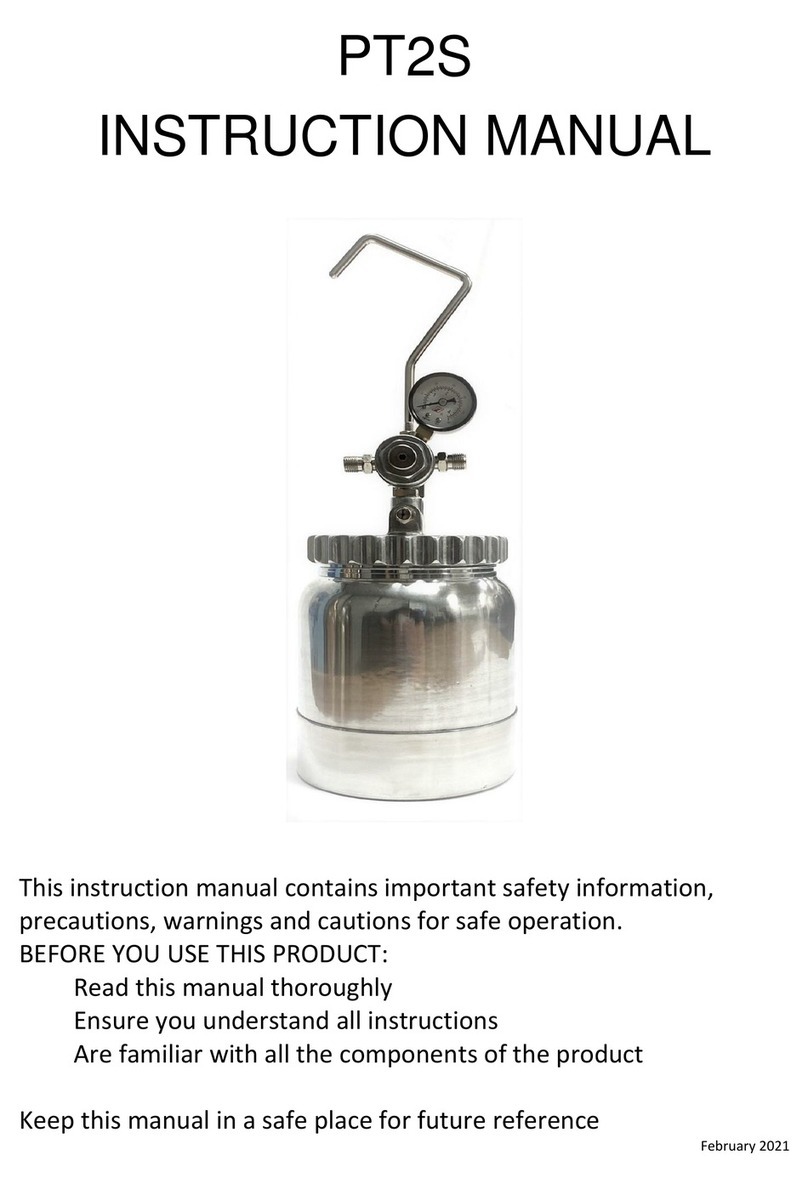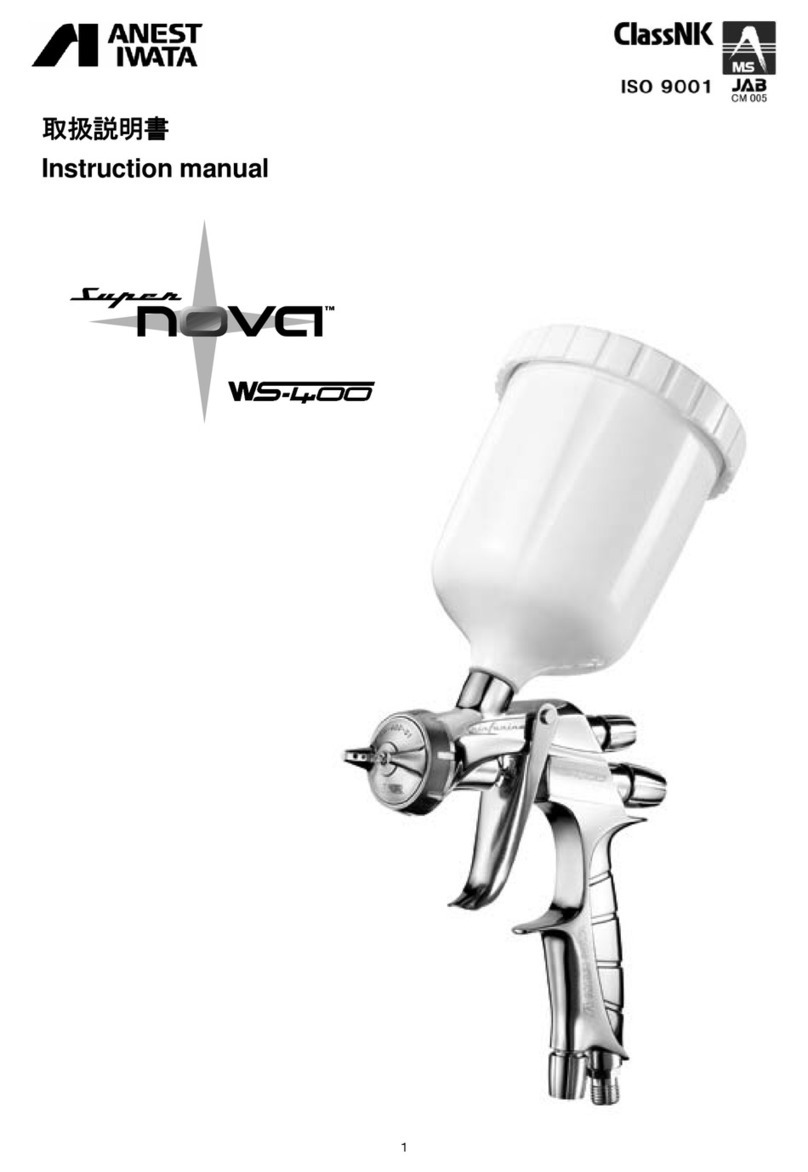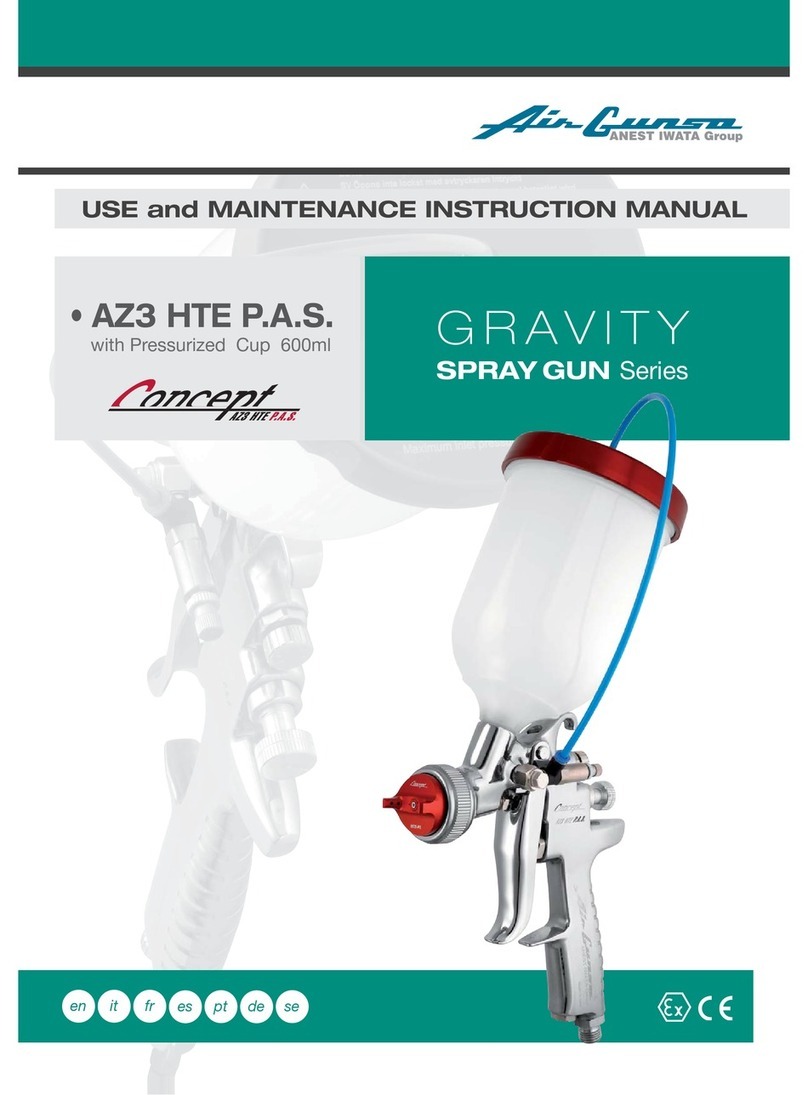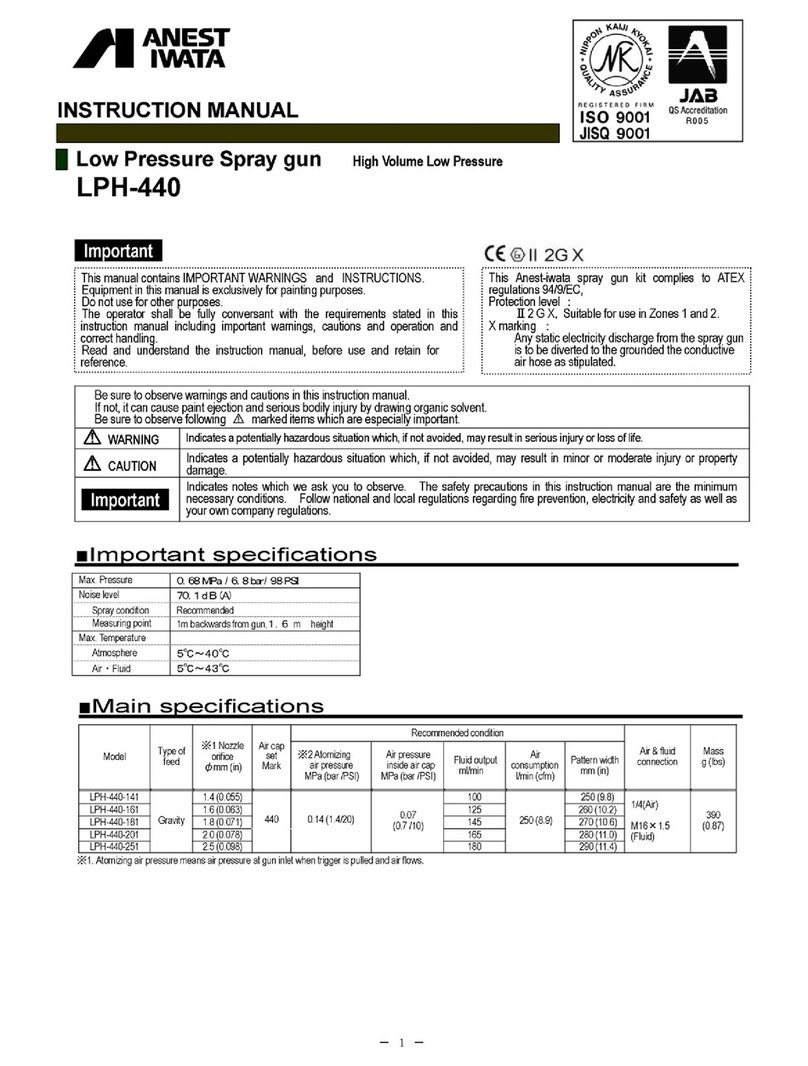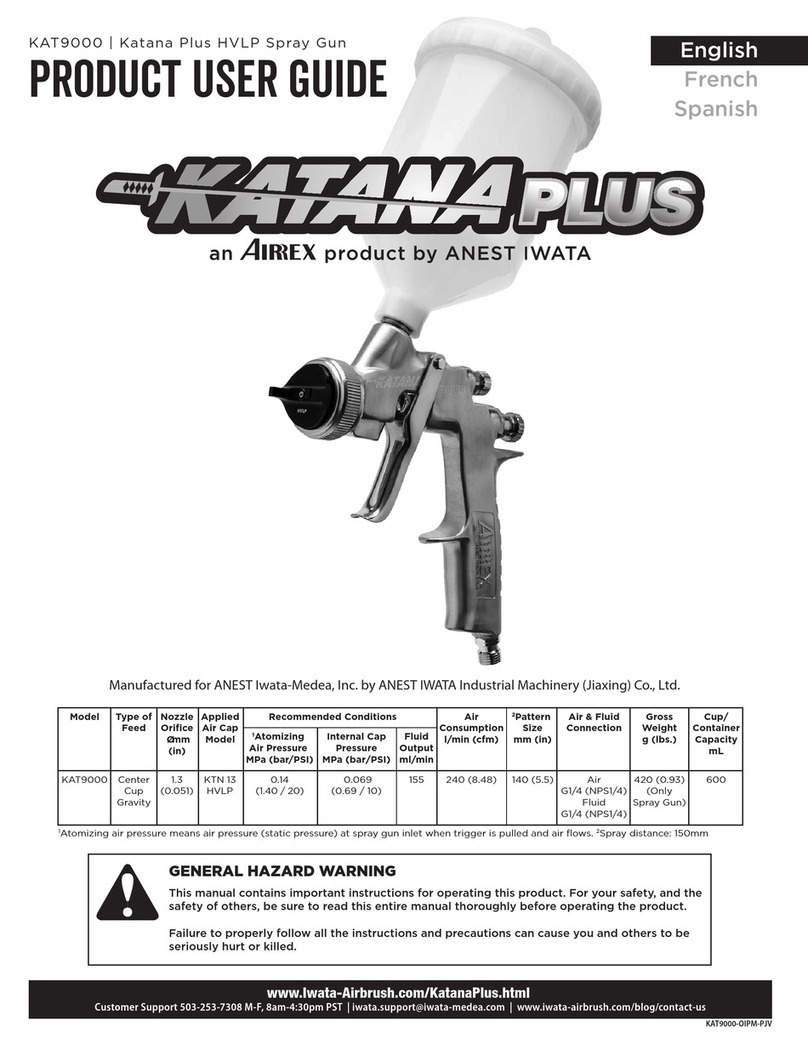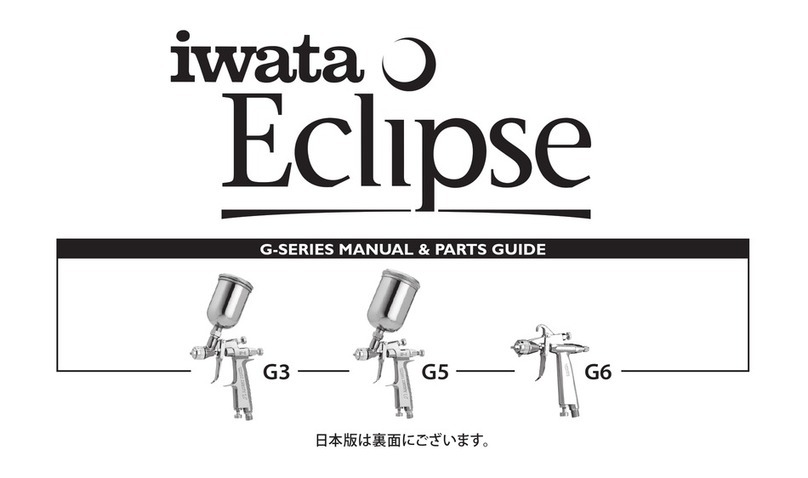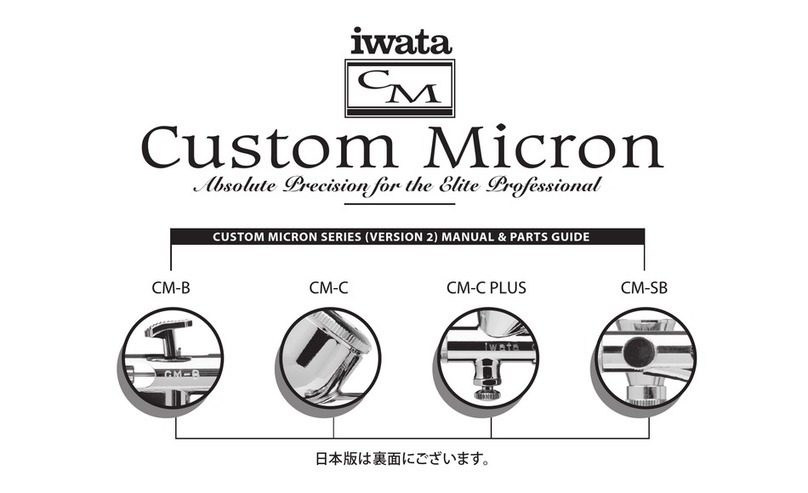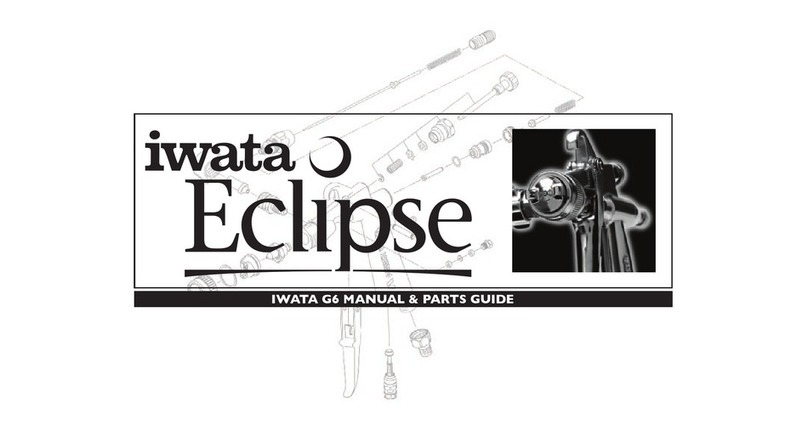Line thickness can be controlled by adjusting the distance
between the airbrush and the surface and also by varying the
paint flow by manipulating the trigger’s position.
An extremely narrow line can be obtained by carefully
removing the needle cap (#1) and positioning the airbrush
closer to the surface.
CAUTION: The needle and nozzle are very delicate. Even a
slight bend on the tip of the needle can adversely effect the
spray pattern.
Wide-Line and Background Spraying
1. Pull the trigger (#9) slightly back to start airflow.
2. Position the airbrush further away from the surface,
from ½ to 6 inches is common.
3. Pull the trigger back much further releasing more paint to
cover the bigger area.
Increase the distance between the airbrush and painted
surface to control the line’s width. Increasing the air pressure
will also effect the spray width. The Revolution’s maximum
usable line width is approximately 2½ inches.
Air Pressure
For the Revolution, working pressures generally vary be-
tween 20 and 60 psi, depending on what type of work is being
done and what textures are desired. A good working pres-
sure may average around 25 psi.The viscosity of the paint and
your desired spray characteristics will also effect your ideal
pressure.As a general rule, larger amounts of paint, or thicker
paints, will be sprayed with higher pressures.WARNING: Do
not exceed 100psi
Paint Preparation
For non-specific airbrush paints proper preparation, including
filtering the paint through a nylon mesh, is recom-
mended for best performance. Paint should be
thinned with its proper solvent. It is best to pre-
pare paint relatively thin and make repeated passes
across the work to achieve the desired shade. This will also
improve the quality of your work and decrease the cleaning
time of your airbrush.
Safety Tips
• Always spray in a well ventilated area.
• Do not spray solvent-based (flammable) paints around
open flames.
• Use the appropriate respirator to safely filter out the paint
vapors particular to the kind of paint you are using.
• Wear eye protection to prevent paint contact with eyes.
• Never use air pressure that exceeds the airbrush’s limit.
(100 psi)

